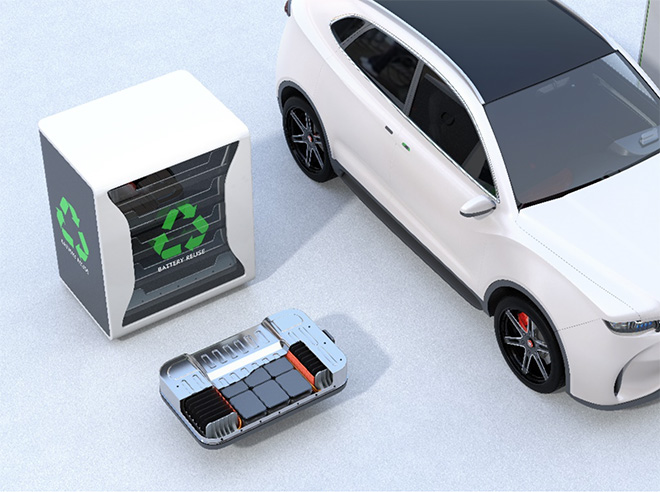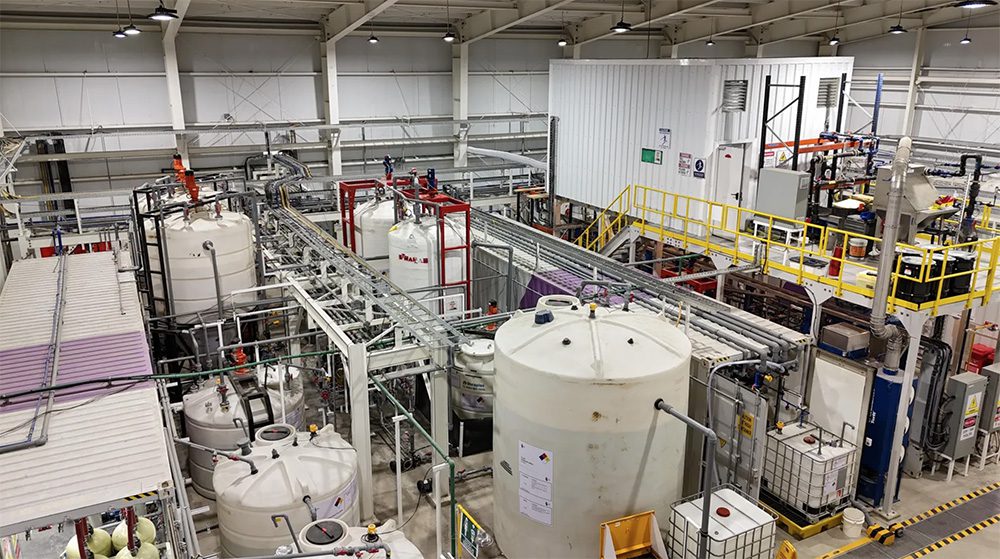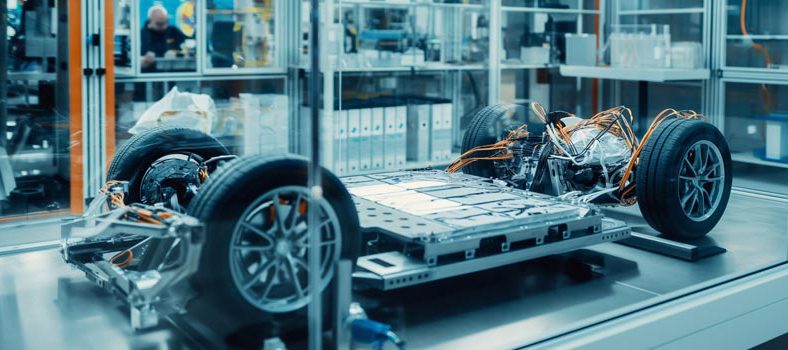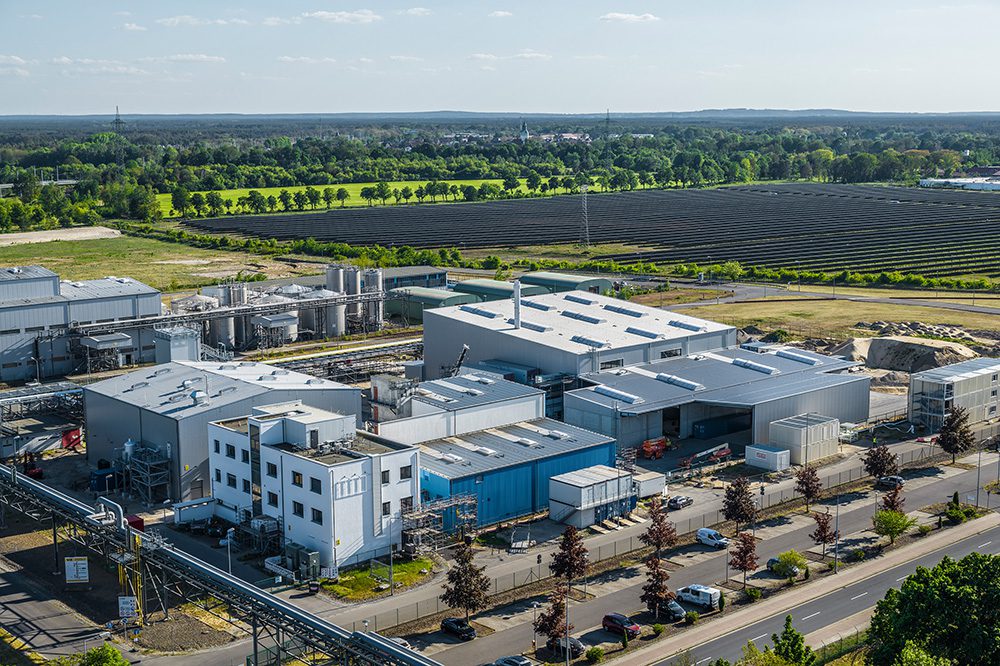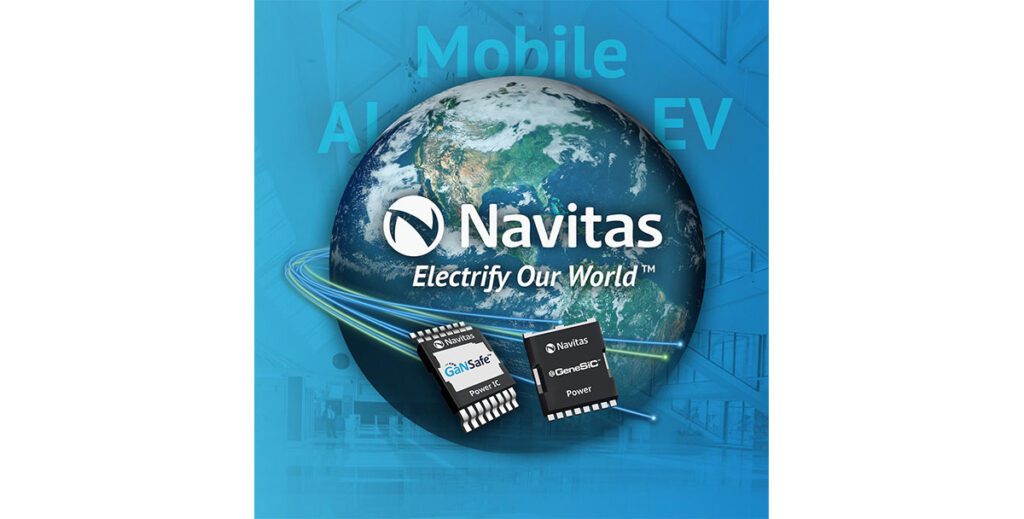Growth in the adoption of electric vehicles brings new opportunities and challenges. This is dynamic, especially in today’s climate. There are, however, some certainties:
- Consumers worldwide will continue to seek greener options in alignment with emerging policies.
- The battery pack represents a large portion of the cost associated with the EV and its performance dictates the travel distance.
- Li-ion batteries experience Capacity Fade and Power Fade and their performance will eventually degrade to a point when they can no longer meet the travel distance requirement.
What happens then?
The answer to that question depends on the policy of the region and the strategy of the manufacturer. Most are transported to and then stored in warehouses awaiting their turn to be graded. Grading is the process of determining the charge-storage capability of the battery in its current state. These logistics are costly – the transportation, the storage, and the grading. Once the entity handling the material assigns a grade an informed decision is made as to whether it can be reused, repurposed or recycled. For example, those assigned an “A” get reused as a replacement in another EV battery pack, those assigned a “B” are packaged for 2nd life applications such as load-leveling, those assigned a “C” are no longer useful and sent to be recycled.
What configuration level makes sense for grading?
Differences in position of modules within the pack will cause non-uniform distributions of current and temperature. With the distribution of stresses in the pack, we expect a distribution of grades on the modules. If we graded packs, we would paint all the modules with the same broad brush.
Modules are generally sealed in the production process and not designed to be reopened. Therefore, if you did disassemble the module to access the cells – the process becomes inefficient at the scale of a production environment. Good information at the cell level, but not worth the cost to get it. While too granular for this process, there is tremendous value during research and development to learn more about the performance of those building blocks – the cells in a module and even components in the cell.
Battery packs are projected to have a useful primary life of approximately 7-years. Look at the actual and projected sales curves for EV. The secondary battery market will experience the same growth rates with a 7-year offset. With the intrinsic value of each of these batteries and on that scale, you can see wave of opportunity if modules can be graded rapidly and with confidence.
Grading at the module level represents the greatest opportunity, but the current process takes several hours.
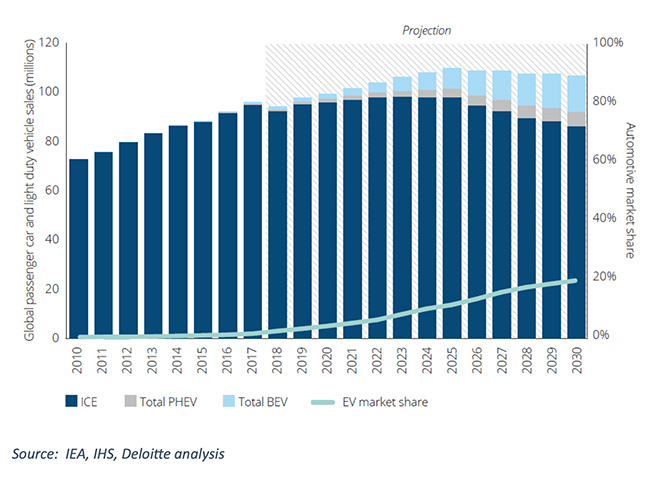
Collaboration to Address Complicated Problems
AMETEK, through its brands of Princeton Applied Research and Solartron Analytical, has a reputation for bringing excellence to the test and measurement of energy devices. AMETEK first changed the field of electrochemical measurements through the development of the digital potentiostat and the frequency response analyzer (FRA). Both technologies are used extensively in cell characterization and material development of Li-ion batteries.
AMETEK engaged with other leaders in the field in a consortium to develop a rapid grading process of modules from electric vehicles. Key players such as NISSAN Energy and WMG of the University of Warwick worked directly with us in development. AMETEK now extended its capability to scale with the SI-9300R — modern technology meets its design principles and manufacturing expertise to address these key challenges and opportunities with electric vehicles.
How is the Technology applied? What is EIS?
Electrochemical Impedance Spectroscopy (EIS) is a measurement technique that provides insight at each of these different points in the activity chain of Li-ion batteries. AMETEK – Scientific Instruments, as the innovator of this technology, has taken a position as an educator on both fundamentals and best practices.
EIS applies a small amplitude AC signal to your device under test. The measured response is shifted by phase and magnitude; and from this relationship AMETEK calculates Impedance. This impedance has frequency dependence and by incrementing the frequency AMETEK builds a profile of your system. EIS provides information on Solid-Electrolyte Interphase (SEI) formation and Solid-State Diffusion of Li-ions in cathode materials such as lithium iron phosphate or lithium cobalt oxide during material development, State-of-Charge of cylindrical cells and State-of-Health of modules. AMETEK has instruments that focus on each of these stages within AMETEK’s product family, enabling seamless transition as your focus evolves.
AMETEK looks to this technique as core to the rapid-grading process because an EIS sweep takes only minutes to complete compared to hours of other grading processes based on DC tests of Charge-Discharge, CC-CV and DCIR.
State-of-Health Determination for Module Evaluation
In the example above AMETEK categorizes the modules into groupings of “A”, “B”,”C”. The accuracy in measurement AMETEK’s products offer, in combination with the resolution that is achieved enables a more sophisticated and objective set of determinations. AMETEK strives for the goal of assigning a measurable KPI to the modules. State-of-Health (SoH) quantifies this as a comparison to the capability of when the battery was new. The ratio of current performance to initial performance determines when a module reaches end of life and should be replaced. And SoH assigns monetary value to such a module on the secondary market.
Importance of Design
Modules and cells are designed to have low-impedance values – as this is loss of efficiency at each charge and discharge cycle. As the module or cell is aged, its impedance grows at a statistically significant, but small, delta. An instrument must be designed and manufactured for a high degree of accuracy, resolution, repeatability, then combined with best experimental practice for its measured impedance to serve as an input for SoH with confidence. These features are critical to this analysis because of the magnitude of the values AMETEK is comparing.
If a new module has impedance of 1 mOhm and an aged module has an impedance of 2 mOhms, a system with limited accuracy resolution (e.g., ± 1 mOhm) will completely miss the entire correlation. AMETEK show here how the difference in response and correlate that to SoH.
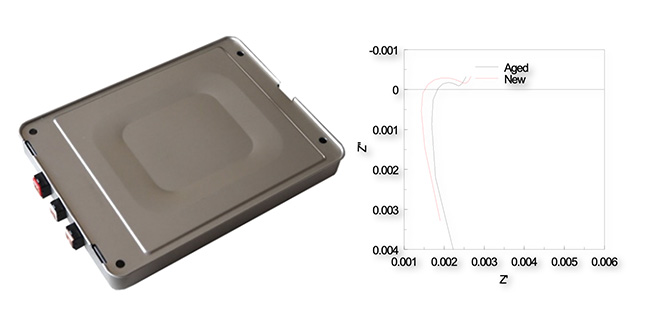
Correlation of Data to State-of-Health
Impedance also has a State-of-Charge dependence. Prior methods would thus prescribe the SoC for the EIS test to determine SoH to remove that influence on the result. AMETEK could have done the same and stopped there and showed some efficiency gains in speed. However, the output of the consortium shows how by taking a matrix of data at different SoC and Temperature an advanced algorithm can be developed to take both of those into account – no longer requiring the time and energy sink to change these and allow for equilibration. This is truly rapid. This advanced algorithm combines with fast data acquisition of EIS and AMETEK’s accuracy, resolution, and repeatability to meet this challenge.
AMETEK shows here the role of the SI-9300R in the rapid grading of modules from electric vehicles. It was designed with flexibility and capability to meet the goals of other projects as well. For example, the regenerative technology (return-to-grid and active balancing) allows for efficient use of power, reducing cost of test by 90%, as well as packing more channels into a smaller footprint. The current measurement technology allows for scale-up through parallel operation and scale-down for different smaller form factors or battery types. This maximizes usage of channels. EIS is standard per channel and data integrity is paramount through its optimized Direct-to-Disk design. With all of this technology, flexibility and diagnostic capability, the SI-9300R is more than a Battery Cycler or Battery Tester…it is a Battery Analyzer.
No doubt that adoption of electric vehicles will grow, based on consumer-demand, economic and environmental policy. Performance of the battery pack is likely to determine which model wins in the market. With stakes this high, manufacturers strive to learn as much as possible, from the inside and out, to create advantage. Materials, cells, and modules are all targets for evaluation and optimization. AMETEK’s instruments and methods support these different programs to meet your most difficult challenges. A partnership.
You can learn more about the fundamentals of Electrochemical Impedance Spectroscopy, its application to material development, cell characterization and module evaluation, and AMETEK’s product portfolio by contacting ROB.SIDES@AMETEK.COM or visiting AMETEK’s website at www.ameteksi.com







